powered by PiQR.io
powered by PiQR.io


Have you ever found yourself hesitating in the dairy aisle of a supermarket? Faced with a dazzling array of “whipping cream,” “heavy cream,” and “non-dairy cream,” unsure which one will keep your cake frosting from collapsing or blend seamlessly into your coffee?
Choosing the right cream might seem simple, but it hides key details that affect taste and safety.Actually, making the right choice only requires grasping the core logic: first, understand the different types of cream and how they match your needs; next, evaluate safety through the fat content, ingredient list, and shelf life on the package; finally, match the product with your intended use (baking, beverages, desserts) to avoid common pitfalls.
This guide will walk you through the selection logic step by step—so you can easily find the perfect cream for your needs.
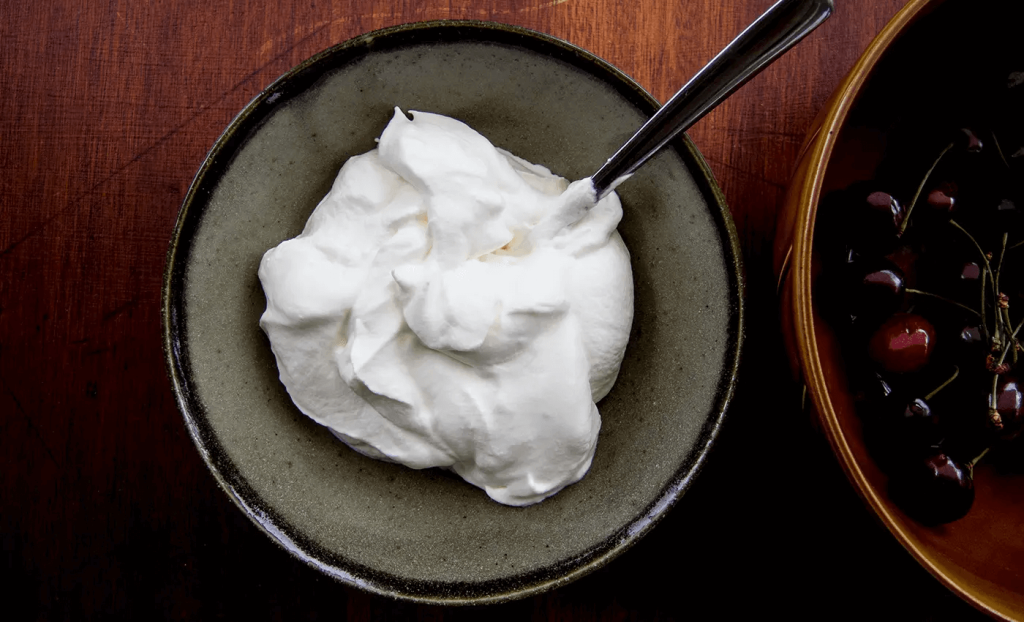
Understanding the differences between creams is the first step to choosing the right one. Creams can be broadly divided into dairy cream ja non-dairy (plant-based) cream, and can also be classified by form: ready-to-use or whipping required.
Made from milk fat, dairy cream can be further categorized based on pasteurization and fat content:
Pasteurized heavy cream: fat content 35%-38%, rich flavor, thick texture, and high freshness.
Ultra-pasteurized heavy cream: same fat content (35%-38%), stronger stability, slightly longer shelf life, but milder taste.
Light whipping cream: fat content 18%-30%, lighter flavor, suitable for mild pairings.
Extra-heavy cream: fat content over 38%, very thick, excellent for complex decorative work.
Made from plant oils, commonly soy, coconut, or almond-based:
Soy-based: fat content usually 30%-35%, mild bean flavor, good for lactose-intolerant consumers.
Coconut-based: fat content usually 30%-35%, tropical aroma, ideal for exotic desserts.
Almond-based: fat content usually 25%-30%, strong nutty taste, smooth texture, lower calories.
By form:
Ready-to-use cream: can be used directly but usually contains more additives and has average taste.
Whipping-required cream: needs to be whipped manually or with tools; fresher and more flavorful.
Most people buy cream for frosting or mousse, which means the cream must whip well and hold its shape.
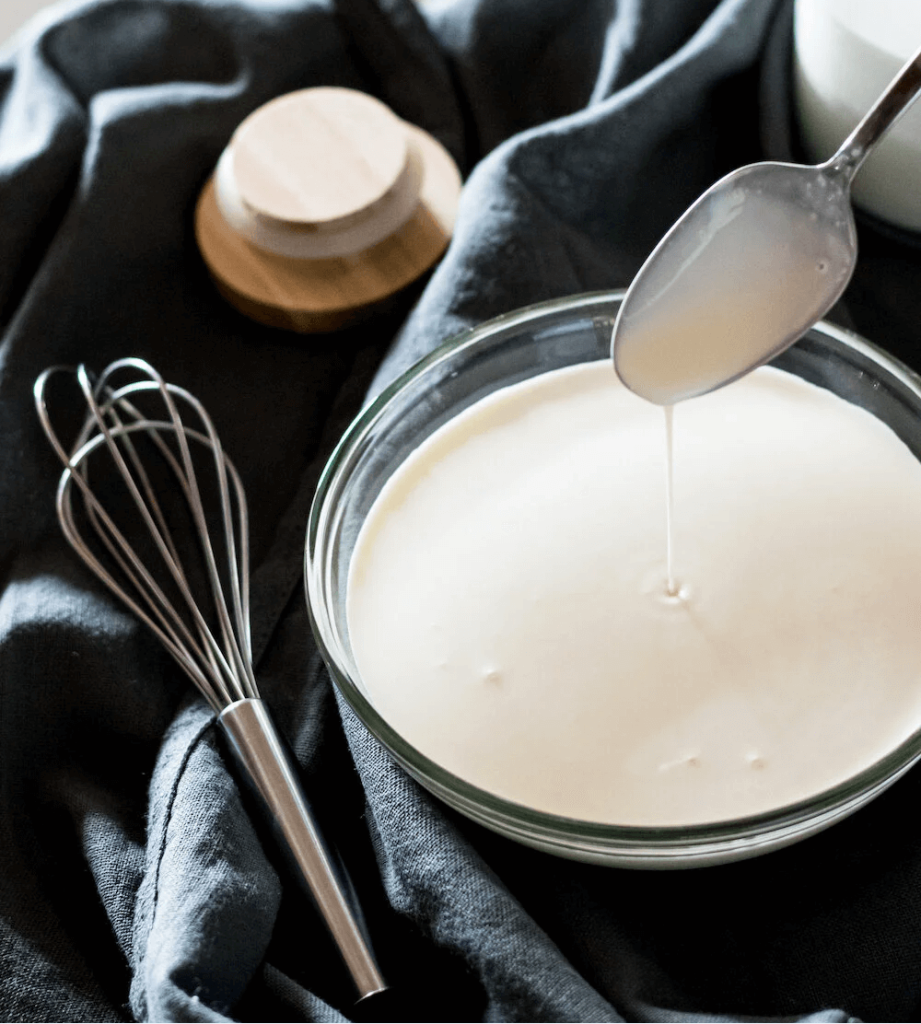
If you want the richest dairy flavor and creamy mouthfeel, this is the go-to. With a fat content of 35%-38%, its naturally thick consistency whips into a fluffy and stable texture. Perfect for frosting or decoration. Keep in mind it has a shorter shelf life and must be refrigerated.
If pasteurized cream is unavailable, this is a great substitute. It undergoes more thorough sterilization, giving it stronger stability and resistance to collapsing after whipping. Ideal for cake fillings or long-standing desserts. Slightly milder in flavor, but perfect for everyday baking.
No matter the choice, remember two essentials:
Fat content of at least 30% for dairy cream—below that, whipping success drops drastically.
Make sure the cream is fully pasteurized. Avoid anything labeled “unpasteurized.” Also, visually check for oil-water separation. Slight separation is normal and can be shaken back into uniformity.
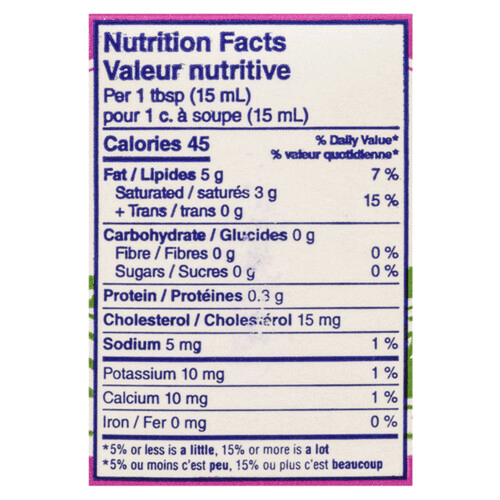
When buying cream, never ignore what’s on the package. Nutritional info and storage instructions are crucial for both safety and taste.
Focus on two numbers:
Fat content: match with your purpose—use 30%+ for baking, 20%-25% for drinks.
Protein content: dairy cream usually contains 0.5%-1.5% protein. If it’s extremely low and lacks a clear “dairy” label, it’s probably plant-based.
This step is key to avoiding “bad” choices:
For dairy cream: first ingredient must be “cream” or “milk + cream,” with no added vegetable oils or hydrogenated fats.
For non-dairy cream: avoid anything with “partially hydrogenated oils,” which can produce trans fats. Prefer clean labels with pure oils like “soybean oil” or “coconut oil.”
Production date: choose ones produced within the last 1–2 weeks, especially dairy cream.
Varastointiolosuhteet: dairy cream must say “0-4°C refrigerated.” If something says “room temperature” but doesn’t clearly state it’s plant-based, be cautious.
Certifications: Look for local manufacturing certifications or licenses to ensure it’s from a legitimate producer.
Check for damage, swelling, or leaks. A bloated package often means spoilage—never buy it.
Look at allergen statements (milk, soy, nuts, etc.). Be extra careful if anyone at home has allergies.

Different purposes call for different cream types:
| Usage Scenario | Key Needs | Recommended Type | Notes |
| Home baking (frosting, pies, mousse) | Whippable, stable, rich taste | Pasteurized heavy cream (preferred), ultra-pasteurized (backup) | For high-temperature pie fillings, choose ultra-pasteurized for better heat resistance |
| Dessert decoration (fruit cups, pudding, tiramisu) | Smooth texture, stickiness, not long-holding | Lightly whipped pasteurized cream, low-additive ready cream | Choose ready cream with minimal additives to preserve flavor |
| Bulk preparation (party cakes, large desserts) | Excellent stability, shape-holding for long time | Ultra-pasteurized heavy cream | Chill cream in advance and whip at ~20°C for better performance |
Many people buy the right cream but still fail because of poor whipping techniques. Here are two practical tips:
Before Whipping:
Refrigerate the cream for 12+ hours. Chill the mixing bowl and beater for 10 minutes. Cold temperature helps cream whip faster and prevents deflation.
Know When to Stop:
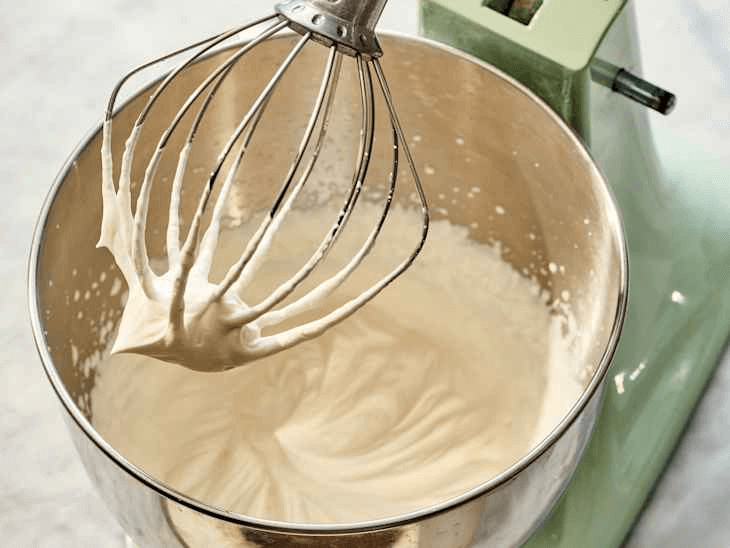
While whipping on low speed, observe the texture—when visible lines don’t disappear and the peaks are short and upright, it’s done. Over-whipping turns cream into butter!
Not recommended. Low-fat cream (under 30%) has poor whipping performance and weak stability—your dessert might collapse. If you must substitute, mix 1 cup low-fat cream + 2 tbsp softened butter to raise fat content. Texture may be heavier than pure high-fat cream.
Three main differences:
Ainesosat: dairy cream = milk fat; plant cream = vegetable oil.
Taste: dairy cream = rich and smooth with dairy aroma; plant cream = lighter, sometimes with specific flavors (e.g., coconut).
Varastointi: dairy cream must be refrigerated (1–2 weeks shelf life); plant cream may be shelf-stable (1–3 months shelf life).
If you notice:
Sour or bitter smell
Mold spots or black dots
Serious curdling that doesn’t mix back when shaken
Bad odor upon opening
Then don’t use it! Spoiled cream affects both taste and health.
Try these:
Stevia (for low-sugar needs)
Lemon juice, etc.
Add them when the cream has reached soft peaks (texture smooth, peaks curl slightly). Then whip another 10 seconds on low to mix.
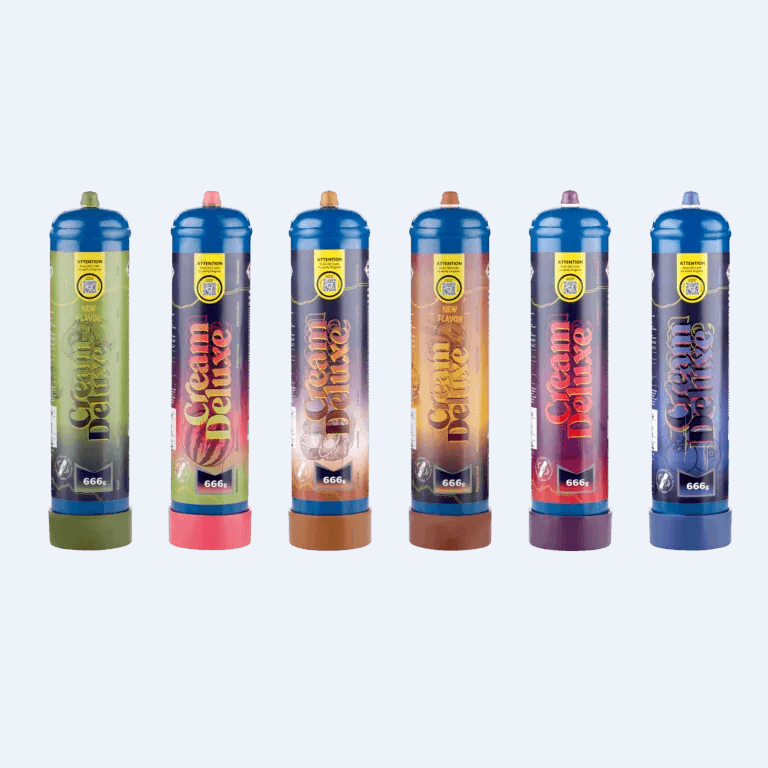
Also, try the Cream Deluxe kermavaahtolaturi—available in various flavors, powered by 99.9% food-grade N₂O. It whips cream in just 3 seconds, perfect for baking or drinks. Saves time and delivers silky texture!
Here’s a quick recap:
Choose type first: dairy cream (for taste) or plant-based (for specific needs).
Check the details: fat content (match purpose), ingredient list (avoid harmful stuff), storage (keep fresh).
Match the usage: high-fat for baking, low-fat for drinks, stable cream for bulk work.
Use good tools: like Cream Deluxe chargers for faster, more flavorful results.
Choosing the right cream isn’t hard—you’ll find your go-to after a few tries. Whether you’re decorating a cake or adding cream to coffee, the right choice adds that silky, luscious upgrade. Bon appétit!
| Cookie | Kesto | Kuvaus |
|---|---|---|
| cookielawinfo-checkbox-analytics | 11 kuukautta | Tämän evästeen asettaa GDPR Cookie Consent -lisäosa. Evästettä käytetään tallentamaan käyttäjän suostumus kategorian "Analytics" evästeille. |
| cookielawinfo-checkbox-functional | 11 kuukautta | Eväste asetetaan GDPR:n evästesuostumuksen mukaisesti tallentamaan käyttäjän suostumus kategorian "toiminnalliset" evästeet. |
| cookielawinfo-checkbox-necessary | 11 kuukautta | Tämän evästeen asettaa GDPR Cookie Consent -lisäosa. Evästettä käytetään tallentamaan käyttäjän suostumus evästeille luokassa "Välttämätön". |
| cookielawinfo-checkbox-others | 11 kuukautta | Tämän evästeen asettaa GDPR Cookie Consent -lisäosa. Evästettä käytetään tallentamaan käyttäjän suostumus evästeille kategoriassa "Muut". |
| cookielawinfo-checkbox-others | 11 kuukautta | Tämän evästeen asettaa GDPR Cookie Consent -lisäosa. Evästettä käytetään tallentamaan käyttäjän suostumus evästeille kategoriassa "Muut". |
| cookielawinfo-checkbox-performance | 11 kuukautta | Tämän evästeen asettaa GDPR Cookie Consent -lisäosa. Evästettä käytetään tallentamaan käyttäjän suostumus kategorian "Suorituskyky" evästeille. |
| viewed_cookie_policy | 11 kuukautta | Evästeen asettaa GDPR Cookie Consent -lisäosa, ja sitä käytetään tallentamaan, onko käyttäjä antanut suostumuksensa evästeiden käyttöön. Se ei tallenna mitään henkilötietoja. |